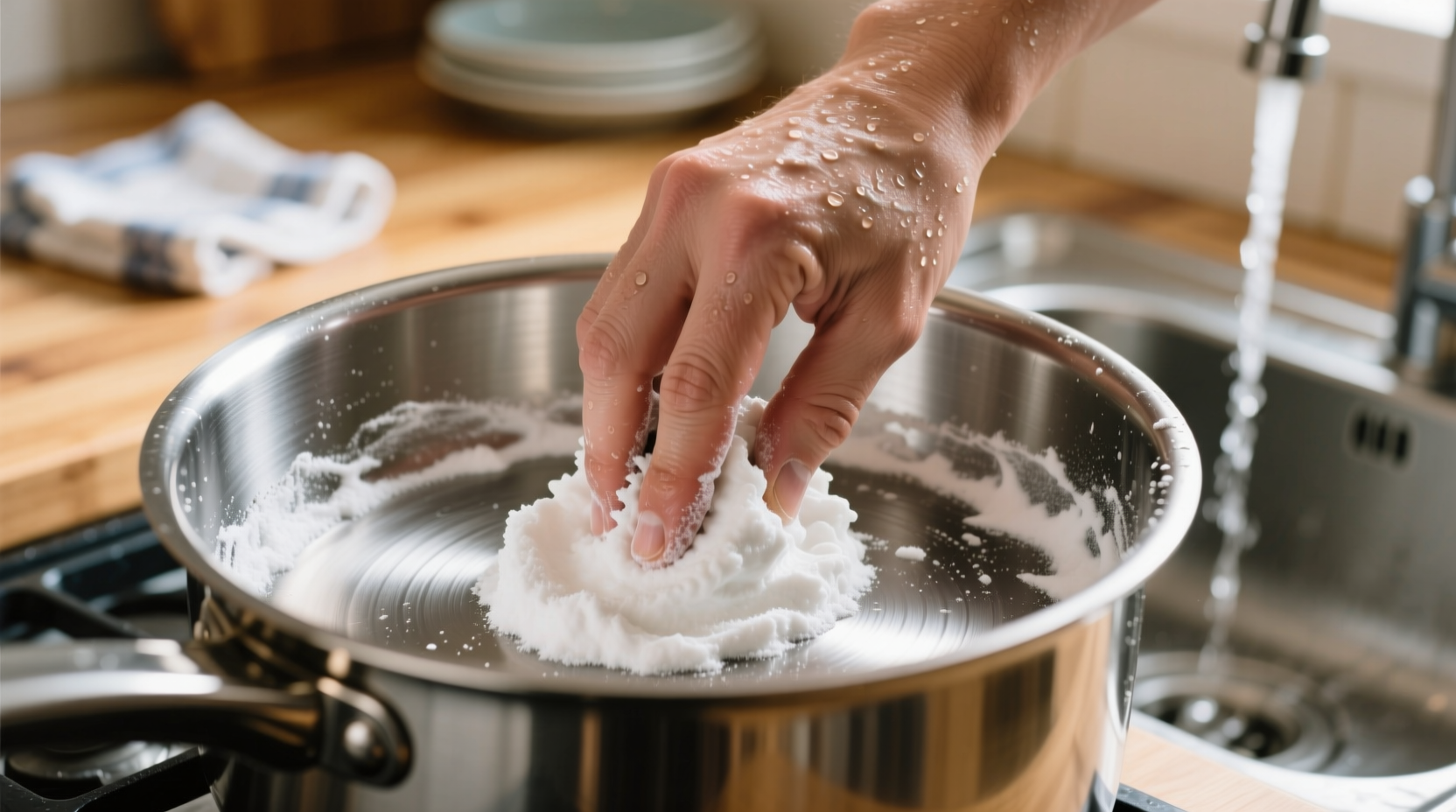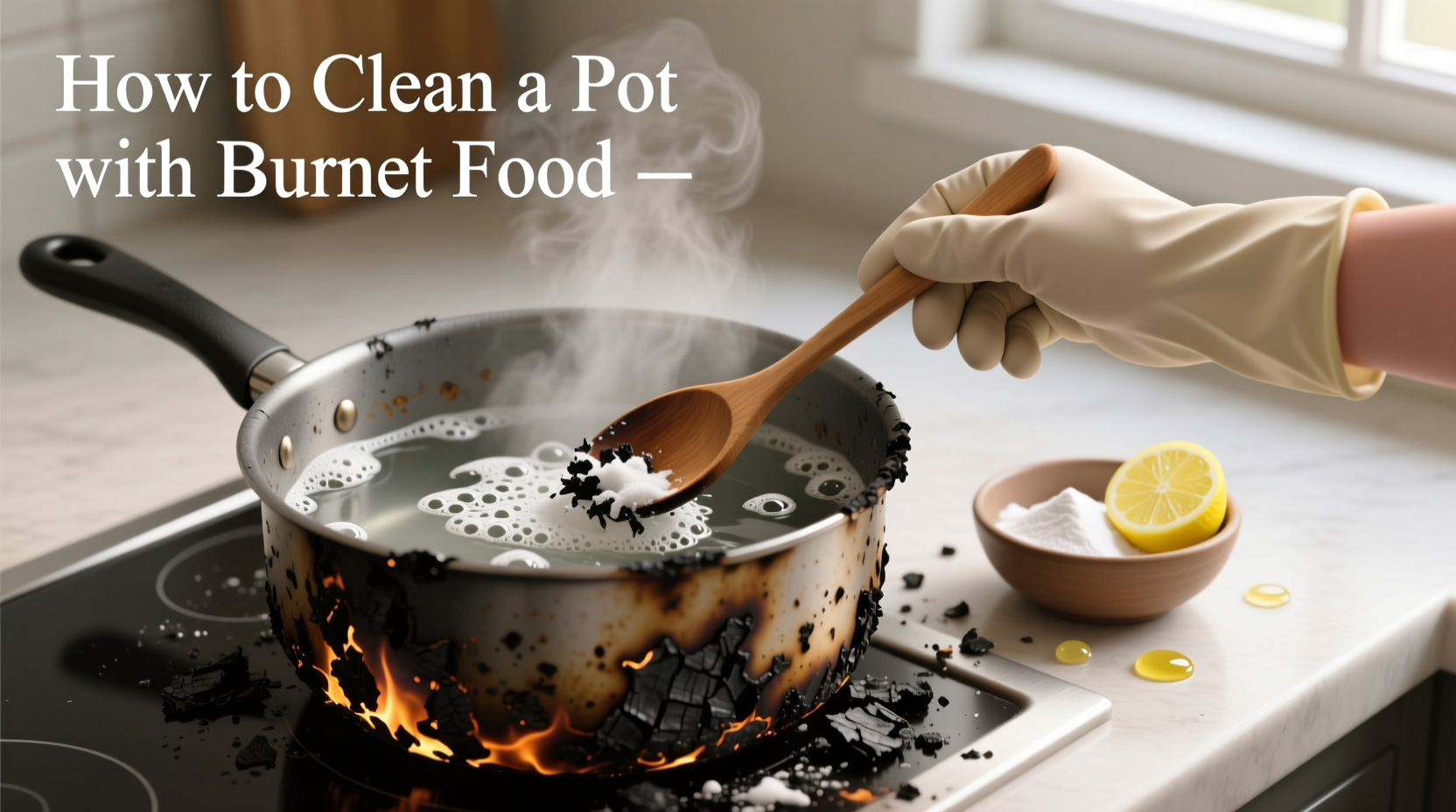Immediately fill your burnt pot with water and 2-3 tablespoons of baking soda, bring to a gentle simmer for 15 minutes, then let it sit for 1 hour before scrubbing with a non-abrasive pad. This method safely removes most burnt food residue without damaging your cookware.
Discovering a pot with stubborn burnt food can turn a satisfying cooking experience into frustration. Whether you got distracted while making caramel or simmering a sauce, that charred layer seems impossible to remove. But don't reach for harsh chemicals or risk ruining your favorite cookware with aggressive scrubbing. This guide reveals scientifically backed methods that safely restore even severely burnt pots using common household items.
Why Burnt Food Happens and How to Respond Immediately
When food reaches its combustion point (typically between 300-500°F), proteins and carbohydrates undergo pyrolysis, creating a carbonized layer bonded to your pot's surface. The key to successful removal is acting before the pot cools completely.
Immediate action steps:
- Turn off heat source immediately to prevent further burning
- Add 1-2 cups of cold water to the hot pot (stand back - steam will erupt)
- Let the pot sit with water for 10-15 minutes to loosen the burnt layer
- Never attempt to scrub a hot, dry pot - this will permanently embed the carbon
According to the USDA Food Safety and Inspection Service, proper handling of cooking accidents prevents both kitchen hazards and cookware damage.
Assessing Burn Severity Before You Begin
Not all burnt pots require the same approach. Understanding the severity helps you choose the right method:
| Burn Level | Visual Characteristics | Recommended Method |
|---|---|---|
| Light | Tan or light brown discoloration | Baking soda simmer (30 minutes) |
| Moderate | Dark brown to black, some flaking | Vinegar soak (2-4 hours) |
| Severe | Charred black, thick carbon layer | Baking soda paste (overnight) |
Proven Methods for Removing Burnt Food Residue
Method 1: The Baking Soda Simmer (For Light to Moderate Burns)
This technique leverages sodium bicarbonate's mild abrasive properties and alkaline nature to break carbon bonds.
What you'll need:
- 1 pot of water (enough to cover burnt area)
- 2-3 tablespoons baking soda
- Non-abrasive scrubbing pad
Step-by-step process:
- Fill the pot with water to cover the burnt area by 1 inch
- Add baking soda and stir to dissolve
- Bring to a gentle simmer (not rolling boil) for 15 minutes
- Remove from heat and let sit for 1 hour
- Use a non-abrasive pad to gently remove residue
- Rinse thoroughly and repeat if necessary

Method 2: Vinegar Soak (For Moderate Burns)
Acetic acid in vinegar breaks down mineral deposits and carbonized food particles.
Process:
- Mix equal parts white vinegar and water to cover burnt area
- Simmer for 10 minutes, then let cool to room temperature
- Soak for 2-4 hours (longer for severe burns)
- Use a plastic scraper to lift residue before scrubbing
Method 3: Baking Soda Paste (For Severe Burns)
When dealing with how to clean a pot with burnt food that's completely charred, this overnight method works best.
Steps:
- Create a thick paste with baking soda and water (3:1 ratio)
- Cover entire burnt area with 1/4 inch layer
- Let sit overnight (8-12 hours)
- Scrub with non-abrasive pad using circular motions
- Rinse thoroughly and check progress
Cookware-Specific Considerations
The best way to clean a scorched pot depends on your cookware material. Using inappropriate methods can damage your pots:
- Non-stick: Never use abrasive pads or metal scrapers. Stick to baking soda simmer method only.
- Stainless steel: Can handle all methods, but avoid steel wool which creates micro-scratches that trap future burnt food.
- Cast iron: Use vinegar method sparingly (no longer than 30 minutes) to preserve seasoning. Always re-season afterward.
- Aluminum: Avoid prolonged vinegar exposure which can cause pitting and discoloration.
The American Heart Association recommends avoiding harsh chemical cleaners that can leave residues potentially contaminating future meals.
Preventing Future Burnt Pots
Understanding how burnt food develops helps prevent repeat incidents:
| Time | Temperature | What Happens |
|---|---|---|
| 0-5 minutes | 250-300°F | Food begins to stick, Maillard reaction occurs |
| 5-10 minutes | 300-350°F | Proteins denature, beginning to carbonize |
| 10-15 minutes | 350-400°F | Carbonization accelerates, creating difficult-to-remove layer |
| 15+ minutes | 400°F+ | Complete carbonization, requiring intensive cleaning |
Prevention tips:
- Use lower heat settings for simmering tasks
- Stir frequently when cooking sauces or grains
- Consider using a heat diffuser for delicate tasks
- Never leave cooking unattended for more than 2-3 minutes
What Not to Do When Cleaning Burnt Pots
Avoid these common mistakes that can damage your cookware:
- Using steel wool on non-stick or aluminum surfaces
- Applying oven cleaner to cookware (too harsh)
- Scrubbing with excessive force when the pot is dry
- Soaking cast iron in vinegar for extended periods
- Using bleach which can react with burnt food residues
Professional chefs at the Culinary Institute of America emphasize that proper cleaning techniques extend cookware lifespan significantly.
When to Replace vs. Repair Your Cookware
Sometimes burnt damage is beyond repair. Look for these signs it's time to replace your pot:
- Pitting or warping in the metal surface
- Non-stick coating that's flaking off
- Permanent discoloration that affects cooking performance
- Warped bottom causing uneven heating
For how to remove burnt food from stainless steel pot situations, replacement is rarely necessary as stainless steel is highly resilient to proper cleaning methods.
FAQs About Cleaning Burnt Pots
Here are answers to common questions about removing burnt food from cookware:











 浙公网安备
33010002000092号
浙公网安备
33010002000092号 浙B2-20120091-4
浙B2-20120091-4